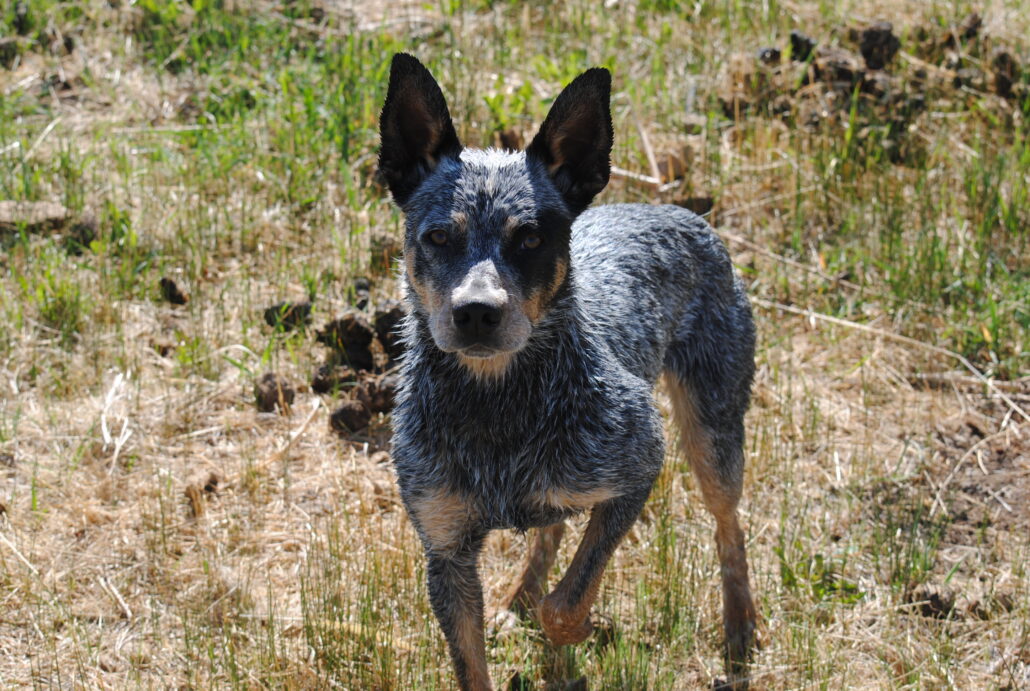I always had dogs growing up, as did my neighbors, aunts, uncles, and childhood friends. Dogs aren’t new to me, but they almost seemed that way when I moved to the San Luis Valley of Colorado and started working for the Bird Conservancy of the Rockies. I grew up in Chicago, IL and the dogs I knew were house pups – used to lazy mornings and an afternoon walk, the occasional frolic in an unused, fenced-in baseball field in the nearby park, and greedy for any and all head pats. So when I moved to the San Luis Valley and met a cattle dog that wanted nothing to do with me, I was surprised. Even my high-pitched, puppy-voice, “Who’s a good boy?” elicited nothing but a blank stare. My attempts to give ear scratches were avoided. The only thing I was worth to that pup was for throwing a stick – over and over and over and over again. Reader, if you’re ever presented with a stick by a cattle dog, know that throwing it once means you’ll be throwing it for the rest of eternity. This pooch was laser-focused on the stick, practically vibrating with excitement before every toss. Other than my stick-throwing abilities, I was useless to him.

A cattle dog anxiously waiting for the stick to be thrown again. Photo by Kelsea Holloway.
My job isn’t, of course, just to go out and visit people’s dogs. I’m a Private Lands Wildlife Biologist (PLWB) with Bird Conservancy of the Rockies and I work with landowners, ranchers, and farmers to conserve wildlife habitat on their properties. We work on projects that will both enhance their operation (increasing forage density for their cows, making irrigation water usage more efficient, etc.) and benefit birds and other wildlife. It’s all about finding a balance between the needs and goals of the landowners, and those of the birds. Landowners are typically focused on making a living and carrying on generations-old traditions. As a PLWB, I am focused on creating and enhancing habitat for migratory and resident birds, conserving habitat for threatened and endangered species, and increasing biodiversity. These goals often go together – there are good ways to enhance dabbling duck habitat
and increase irrigation efficiency and efficacy.
However, when I first began this work I was acutely aware of how I, as the big city gal coming into a rural community, needed to present those synergistic goals. I knew I ran the risk of coming off as a “know-it-all” if I reprimanded landowners for what I perceived as shortcomings in their land management strategies or wildlife habitat. As a PLWB, it’s essential to take a step back, listen, and learn from the landowners, whose deep knowledge about the land they steward comes from years (and often generations) of experience. Landowners know just about everything about what happens on their land, from how water moves across their properties to how they get cattle from point A to point B. That’s how I ended up joining one rancher and his crew on a cattle drive one early Wednesday morning. And that’s how I learned the difference between the “pet” dogs I’d grown up with and the working dogs out here in the San Luis Valley.

A cattle dog pushes a wandering cow and calf back towards the herd. Photo by author.
We pushed 500 cows over 13 miles, and it would have been an entirely different day without the four cattle dogs with us. Nipping at the heels of slow-moving cows, barking at stragglers, and rejecting any invitation for a break, these dogs worked harder than any of us. The cattle owner had his old, retired cattle dog with him on the trek. I watched her anxiously hang her head out of the truck window and it was clear she just wanted to be back in the game. From the looks of it, though, it’s a dangerous game for the dogs. I asked a rancher if the dogs ever get kicked by the cows. “All the time”, he said, “but they just bounce right back up.”

Two cattle dogs work together to push the herd. Photo by author.
This isn’t the story everywhere across the San Luis Valley, of course. For every few cattle dogs sitting untethered outside houses and barns, there’s an indoor pup in someone’s living room looking out the window and barking at squirrels. Still, meeting these “working dogs” has been one of those culture shocks for which I was entirely unprepared. Silly of me to think all dogs like to lounge just because my dogs (and I) do. As I continue to work with and learn from landowners across the SLV, I know I’ll continue to meet new pups, whether they’re running up to me for scruffles or bringing me a stick so we can play fetch from now to eternity.
Anna Greenberg (based in Alamosa, CO) is Private Lands Wildlife Biologist at Bird Conservancy of the Rockies with funding support from the USDA Natural Resources Conservation Service, Colorado Parks & Wildlife and the National Fish & Wildlife Foundation.





